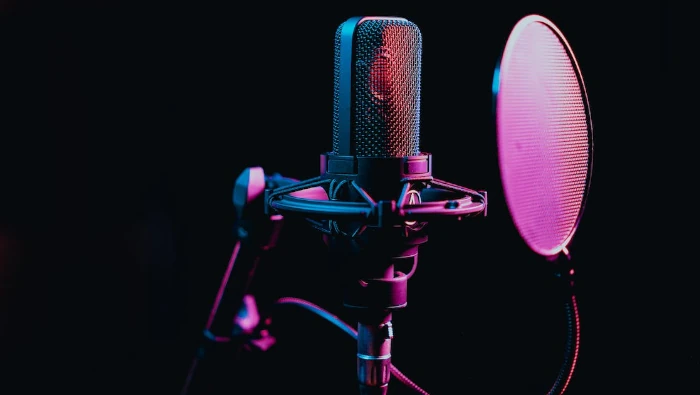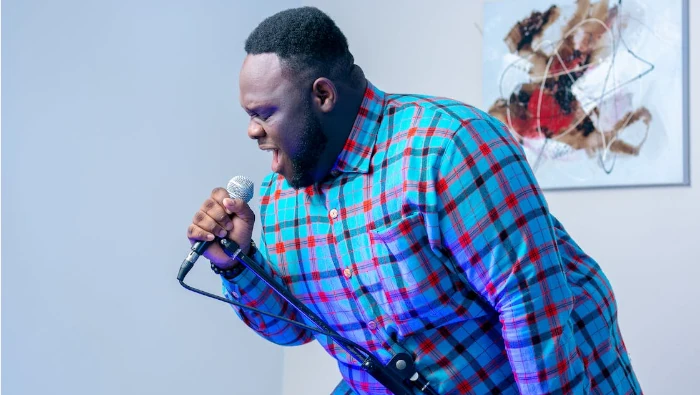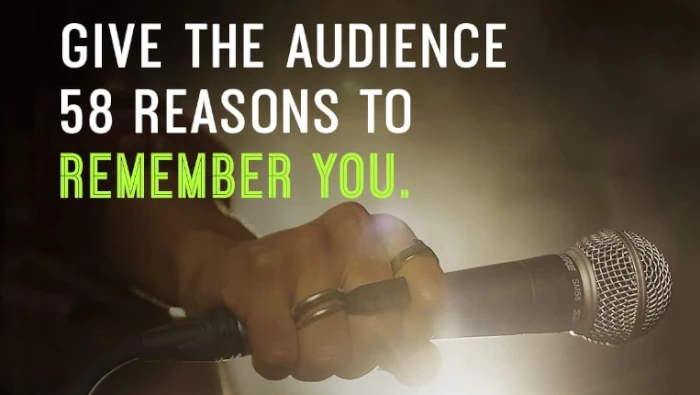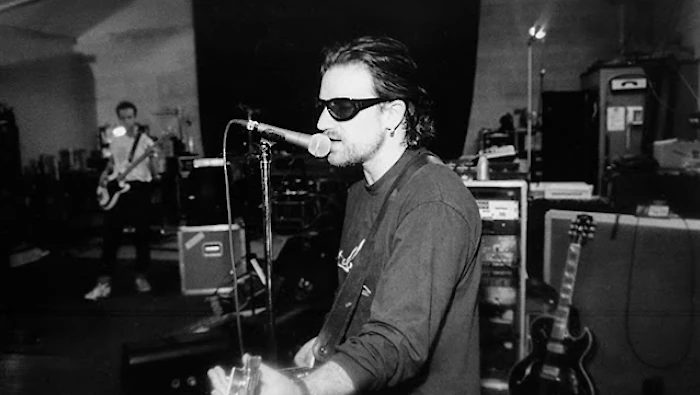Hey there, music aficionados and home studio enthusiasts! Have you ever found yourself in a whirlpool of confusion about the kind of mic to sing into for that golden vocal take? You’re not alone! When venturing into the world of home recording, the chatter about microphones can sound like an endless echo—especially when it comes to capturing those pristine vocals.
Now, I know what you might be thinking. To reach those spine-tingling, ethereal levels of audio quality, you’ve gotta break the bank, right? Splurge on that gleaming piece of tech that costs more than your rent? Well, what if I told you that some of the most celebrated voices in the industry have been belting out chart-toppers into mics that are, let’s say, more humble in price?
It’s true! Prepare to have your mind blown as we explore the curious case of dynamic microphones and their hidden superpowers. Contrary to popular belief, these budget-friendly beasts might just be your passport to high-quality vocal recordings.
So, buckle up, fellow sound seekers! We’re about to dive deep into the debate that’s been buzzing around studios worldwide: Can dynamic microphones truly stand up to the challenge of recording high-quality vocals? Spoiler alert: The answer might just turn everything you’ve heard on its head. Stay tuned as we tune out the noise and tune into the truth!
Dynamic vs. Condenser Microphones: A Brief Overview

Are you often picturing those big, studio-bound beasts encapsulated in shock mounts when you think of recording studios? You’re not alone! Most envision the classic, large-diaphragm condenser microphone — a studio staple for capturing crisp, detailed sound. But let’s not forget their stage-ready siblings, the robust and reliable dynamic microphones.
Condenser Microphones: The stars you’re used to seeing — think of them as the high-definition cameras of the audio world. They have the sensitivity to pick up intricate sound nuances, making them the go-to for studio work. But with great sensitivity comes the need for a controlled environment, free of noise and potentially paired with phantom power to operate.
Dynamic Microphones, by contrast, are the tough cookies of live performances. Their solid construction and ability to withstand high sound pressure levels make them ideal for gigs. With their cardioid pickup pattern, they focus on the sound straight in front and minimize the noise from sides and rear — a feature that can be a real boon in less-than-ideal recording spaces.
So, nestled in between the high-fidelity capture of condensers and the rough-and-tumble nature of dynamic mics lays the pivotal question: Can dynamic microphones really do justice to high-quality vocal recordings? It’s time we dive deeper and see why some of the industry’s beloved voices might opt for the underdog in their quest for the perfect take.
With a clearer picture of our two contenders, let’s unravel the mystery of why dynamic mics might just be the unsung heroes of the recording world.
The Verdict from the Pros: Dynamic Microphones Win

Have you ever wondered what the true pros of the music world use in their recordings? Well, you might be startled to find out that dynamic microphones, which are often considerably more wallet-friendly than their condenser counterparts, are not only just picked but sometimes preferred by some of the biggest names in the industry.
Take the iconic Shure SM58, for example. This dynamic microphone has been a staple on stages across the globe for decades, but did you know it has graced countless recording studios as well? It’s almost counterintuitive, right? You’d think that these artists, with vast resources at their fingertips, would always go for the most expensive gear. However, the reality is far more nuanced and fascinating.
The robust design of dynamic microphones like the Shure SM58, coupled with their reliable performance, often makes them the go-to choice for artists, especially when on tour. Their durability means they can withstand the rigors of the road — and even the occasional toss or tumble — without compromising audio quality.
Arouse Interest
But beyond just practicality, there’s something to be said about the audio quality itself. While dynamic mics may not capture every subtle nuance that a high-priced condenser mic can, they excel in delivering warm, rich vocals that sit perfectly in a mix without the need for excessive tweaking. This sound quality, dear reader, is what has cemented dynamic microphones in the hearts of many musicians and producers.
Now, argue with it as you might, the proof is in the pudding — or in this case, the sound waves. The sheer number of hit records that have boasted vocals recorded with dynamic microphones is staggering. This isn’t just a fluke; it’s a trend that underscores a straightforward but frequently disregarded truth: a microphone’s cost does not dictate its ability to capture magical performances.
So, why don’t we dive a bit deeper into the realm of dynamic microphones? Let’s explore why something as simple and affordable as a dynamic mic is, time and again, the secret ingredient to a platinum-selling artist’s vocal track. Stay tuned, because we’re about to crank up the volume on some of the music industry’s best-kept secrets.
Performance Trumps Equipment: The Artist’s Comfort

Connect with personal experience
Have you ever noticed how a familiar pair of shoes can make you walk with more confidence? The same goes for artists and their microphones. Think about it: the microphone is the very tool that captures the soul and essence of a performance. It stands to reason then, that the artist’s comfort with their microphone can significantly affect the quality of their delivery.
Illustrate the comfort factor
Many artists have spent years honing their craft with a dynamic microphone in hand, live on stage. It’s their ally, their tried-and-true companion through countless shows. So when it’s time to lay down tracks in the studio, that same dynamic mic, like the renowned Shure SM58, can make all the difference. It’s not just about the specs; it’s about how the artist feels while recording. Comfort breeds confidence, and confidence can transform a good take into a stellar one.
Introduce the “REC Button Syndrome”
Now, let’s chat about a lesser-known studio phenomenon that often goes by the name “REC Button Syndrome.” Picture this: An artist is nailing their performance during rehearsal, every note infused with passion. But the moment the recording starts, that spark fades, and the performance turns lackluster. It’s frustrating, right? This syndrome is surprisingly widespread, even among seasoned professionals. The red light of the recorder can be daunting, making the familiar feel of a dynamic mic a true performance enhancer.
Affirm the value of the artist’s expression
In the end, the true magic lies in the artist’s vocal expression, the authentic vibe they bring to the microphone. If holding a dynamic SM58 translates to the singer delivering their heart and soul into each lyric, then that’s the microphone to use. Beyond the technical aspects, it’s the emotional connection and energy conveyed in the recording that will resonate with listeners. Remember, the ultimate goal is to capture that intangible, electrifying performance that makes music truly come alive.
By emphasizing the artist’s preference and comfort level, we validate an essential truth in the recording industry: while technology matters, it’s the human element—the artist’s touch—that turns a recording from mundane to mesmerizing.
Dynamic Microphones and Their Versatility in Home Studios

Let’s dive into why dynamic microphones are such a hit for home studio environments. Whether you’re in a suburban bungalow or a bustling city apartment, home studios often come with their fair share of ambient noises. From the hum of appliances to the occasional wind gust, recording at home presents unique challenges.
Picture this: you’re in the zone, delivering the vocal take of your life, and a siren wails outside. With a condenser microphone, that take might be ruined by the intrusion, but not so with a dynamic mic. Dynamic microphones like the Shure SM58 come equipped with a cardioid pattern—a real superhero trait. It zeroes in on your voice while giving a cold shoulder to sounds from other directions.
Now, imagine trying to capture that perfect vocal take in a room that looks more like a storage closet than a studio. Acoustic treatment can be costly and space-consuming, but dynamic microphones can be far more forgiving. They let you focus on a powerful performance without the fanfare of extensive soundproofing.
Less Sensitivity Advantages
And let’s not forget the ever-present computer fans and air conditioning units. Typically, they’re the arch-nemesis of a clean recording. But guess what? A quality dynamic microphone handles these inconveniences with grace. It’s less likely to pick up those buzzing and whirring background noises, meaning you can keep your cool—literally and figuratively—without compromising your sound.
So, for the musically inclined multitasker who records a riff between replying to emails and rehearsing lines, a dynamic microphone offers a practical and high-quality solution. It stands as a testament to the fact that with the right mic choice, your home studio is ready for action at any moment, with little worry about your less-than-perfect recording space.
As you can see, dynamic microphones have an all-access pass to making great music in any environment. They’re the unsung heroes of the recording world, providing versatility, durability, and quality—without demanding an acoustic sanctuary. Keep this in mind for your next session, and you’ll be all set to lay down vocals that sound like they were recorded in a top-notch studio, even if it’s just your cozy little corner at home.
Choosing the Right Dynamic Microphone

When venturing into the realm of recording, aligning with the right equipment is crucial. While dynamic microphones have clearly earned their stripes, not all are created equal. To yield the desired audio quality, one must be discerning when selecting a dynamic microphone.
A pivotal point to remember is that dynamic microphones span a broad spectrum in terms of price and quality. The trap of ultra-affordable mics is tempting, especially when you’re a part of the home studio brigade with an eagle eye on budget constraints. However, microphones hailing from the karaoke echelon often fall short on delivering a rich and accurate audio capture. Their limited frequency response can inadvertently handcuff the vibrancy of your recordings, leaving your vocals tethered to a subpar representation.
Now, it’s no secret that the Shure SM57 and SM58 have garnered a trusty reputation among musos worldwide. These stalwarts stand as testaments to the union of affordability and reliable performance. Walk into most music shops or thumb through the pages of an online gear emporium, and you’ll likely encounter these legends holding court. Their popularity isn’t unwarranted–the SM57 and SM58 effortlessly tick the boxes of durability and sonic fidelity synonymous with dynamic microphones.
Consider The Niche
As a counterpoint, let’s not forget that condenser microphones still hold their own in the marketplace. Their heightened sensitivity and broader frequency response cast a wide net attracting studio perfectionists. Yet, they are fleeting apparitions in most retailers due to their higher price tags and more niche appeal.
In your quest for that perfect dynamic microphone, urge yourself to resist the siren calls of shockingly low prices. Seek out microphones that have not just survived but thrived under the scrutiny of the music industry. Delve into reviews, devour forums, and seek out sound samples, ensuring that your choice is backed by a chorus of approval from those who have laid tracks before you.
In the unpredictable acoustics of a home studio, vying for a dynamic microphone with at least the reverence ascribed to the SM57 or SM58 is a sagacious move. It’s about flirting with the limits of budget-friendliness and uncompromised audio. Remember, a judicious investment here, particularly in quality, might just be the linchpin in the grand scheme of your recording aspirations.
Success Stories: Dynamic Mics in Iconic Recordings

What truly solidifies a piece of gear in the hall of fame is its track record, and dynamic microphones boast an impressive legacy. When discussing dynamic microphones in professional recordings, it’s remarkable to note that some of the most iconic albums and tracks have been brought to life using these seemingly modest tools.
Take the legendary Shure SM7B, for instance. This microphone entered the annals of music history with its critical role in Michael Jackson’s “Thriller,” one of the best-selling albums of all time. The warm and detailed vocal sound captured in this groundbreaking album stands as a testament to the capabilities of dynamic microphones when in the right hands.
The Bono’s Choice
Moving on to another superstar who favors dynamic mics, Bono Vox of U2 opts for the familiar and reliable presence of an SM58. It’s not just about ease and comfort for him; the audio quality delivered by this microphone meets the high standards required in both studio recording sessions and live performances. The fact that dynamic microphones can seamlessly transition between these two environments speaks volumes about their practicality and versatility.
Then there’s the smash hit “Californication” by Red Hot Chili Peppers, where the raw and intimate vocal delivery is none other than the work of an SM57. It’s another shining example of how the proximity effect inherent in dynamic microphones can be skillfully used to enhance a vocal track, bringing a unique character that might not be easily replicated with other microphone types.
These stories are far from isolated incidents; many other chart-toppers have been captured with dynamic microphones. It reveals a simplistic yet profound truth in recording: the end result does not always hinge on the price tag of the equipment but on how effectively artists and producers work with the tools at hand.
Dynamic microphones, through their resilience and responsiveness, have undeniably earned their stripes in the music industry. They have proven that high-quality vocal recordings are not beyond their reach, marking their place as a valuable asset in any recording situation, whether in a professional studio or a makeshift home setup.
Limitations and Special Considerations for Dynamic Mics

I guess you’re thinking, “Dynamic microphones sure sound like an all-around winner,” right? Well, hold your horses, because just like anything else, they have their quirks and particular uses. Let’s dive into when you might want to think twice about reaching for that dynamic mic.
Sound Detail Matters
Dynamic microphones are the sturdy workhorses of the mic world. They’re reliable and resilient but don’t always have that fine-tuned sensitivity to capture the whisper of gentle vocal nuances. This is where a condenser microphone, with its broader frequency response and higher sensitivity, might just steal the spotlight.
Appreciating the Low End
Men typically have lower vocal ranges, and dynamic microphones can handle bass-heavy voices with a certain panache. However, the details in the lower frequencies are not as pronounced as with some other mic types. Luckily, this isn’t a deal-breaker for most male vocals, but it’s good to keep in mind if you’re after crystal-clear low tones.
Watch Out for the Proximity Effect
One cool feature of many dynamic mics is the proximity effect, but it comes with a caveat. It boosts the bass frequencies as you get closer to the mic – perfect for adding some warmth and depth to your sound. On the flip side, too much of a good thing can become muddy real quick. Pro tip: Keep a high-pass filter handy to clean up any excess bass that sneaks into your recording.
Going Beyond Basic
And then there’s the creative stuff – ramming your vocals through a bunch of processes that can degrade audio quality. If your recording’s destiny involves heavy post-production, having a detailed capture from the get-go, something a condenser mic excels at, is key.
Ribbon Microphones: The Wildcard
Ah, ribbon microphones — the often overlooked choice for recording. They’re great for a gentle, warm vocal sound, but they’re delicate and not quite as versatile. I’ll unwrap the mystery about ribbons another time, but just know they’re another color on your audio palette.
So there you have it, friends – dynamic microphones are amazing in their right, but knowing when to use them and when to opt for a different tool is essential. Whether you’re a budding producer or a seasoned audio aficionado, keep experimenting! Who knows? Maybe you’ll discover a compelling blend of old-school dynamic roughness with high-tech condenser clarity.
Conclusion: Embrace Learning and Exploration in Audio
Believe in Your Sound
Folks, we’ve journeyed through the world of dynamic microphones and unveiled some of the industry’s best-kept secrets. It’s crystal clear now that with the right dynamic microphone, and even more importantly, the right techniques, you can capture vocals that resonate with warmth, clarity, and professionalism. It’s not always about the price tag or the allure of high-end gear; it’s about the magic that happens when an artist delivers their best performance.
Keep the Curiosity Alive
I cannot emphasize enough the value of curiosity in this field. Audio production is an ever-evolving art form, teeming with nuances that could take your sound from good to unforgettable. So don’t rest on your laurels. The learning never stops, and neither should your quest for knowledge. Whether it’s mastering the use of a dynamic mic or the intricacies of mixing, each skill you acquire is another tool in your toolbox, another step toward becoming an audio alchemist.
Power Up with Information
Remember, with every new trick learned, your power to create and innovate magnifies. This power transforms into confidence, not just in handling the technical aspects of recording but in making artistic choices that elevate your work. Grab those opportunities to attend workshops, watch tutorials, and engage with fellow audio enthusiasts. Every piece of information lights the path to your mastery.
Your Next Masterpiece Awaits
So, whether you’re recording your next track with a trusty Shure SM58, or you’re experimenting with different mic placements and acoustics, take pride in the process. Who knows? Your dynamic microphone could be the key to your next viral hit or critically acclaimed masterpiece.
Rise to the Challenge
As we wrap up this sonic exploration, take this as your challenge: grab your dynamic microphone, hit record, and pour your heart and soul into every note. Then, tweak, mix, and experiment. The world of high-quality audio isn’t reserved for those with the most expensive gear—it’s for those who dare to innovate, learn, and inspire with whatever tools they have at their disposal.
Keep the beat going, keep the passion alive, and let the world hear your voice as it’s meant to be heard — authentically and beautifully.
Until next time, keep pushing the boundaries of your Home Studio and always remember, great sound is at your fingertips. All you need to do is reach out and craft it.
Keep making waves in the sea of sound!

